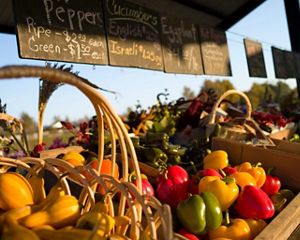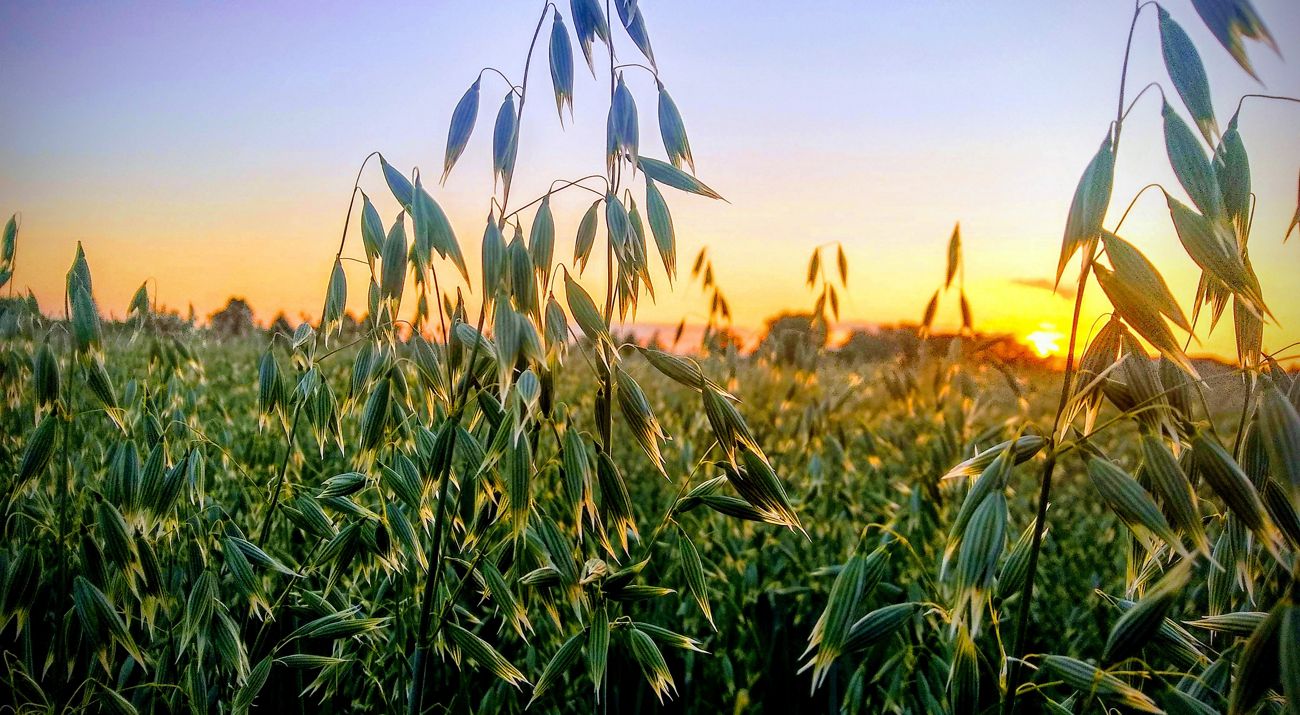
In the heart of America’s Corn Belt, a quiet revolution is taking root. Farmers are rediscovering the value of crop diversification, and oats—once a staple of regional agriculture—are positioned to make a strong comeback.
This shift is not just about changing what’s grown. It’s about building economic resilience and protecting critical land and water resources.
A Lost Legacy, A New Opportunity
In 1950, farmers in Illinois, Iowa, Minnesota and Wisconsin harvested a combined 18.3 million acres of oats. By 2024, that number had plummeted to just 294,000 acres—a staggering 98% decline. This dramatic drop reflects decades of consolidation around corn and soybeans but also highlights the untapped potential for reintroducing oats into modern rotations.
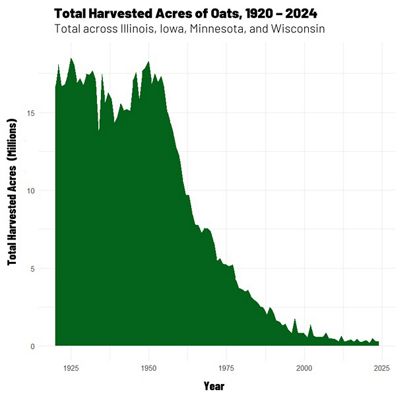
Why Diversify?
While corn and soybean crops are essential, relying solely on them has created vulnerabilities—from soil degradation and pest cycles to market volatilities. Diversifying with small grains like oats offers one compelling solution to economic and environmental challenges.
“Oats are a wonderful crop for building farmer economic resilience,” says Lisa Kushner, agricultural landscape projects director for The Nature Conservancy’s North America Agriculture program. “They create new market opportunities, improve water quality and soil health, and reduce climate impacts—a win-win for farmers, communities and nature.”
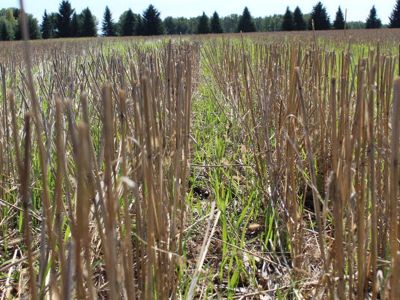
Oats are a cool-season crop that mature earlier than corn and soybeans, making them ideal for double-cropping, grazing and establishing cover crops. Their early harvest opens up the growing window for rotational cover crops. The fibrous root system of oats helps to improve soil structure and moisture retention, and their grow cycle helps to suppress weeds and disrupts the life cycle of pests—all benefits compounded when used in conjunction with cover crops.
Isaac Bertram, who farms near Duluth, Minnesota, grows oats on about one-third of his land and is looking to add more. He believes there’s a big market for crops like oats that are grown locally, are good for the environment and that also appeal to health-conscious consumers.
Quote: Isaac Bertram
I think there’s a lot of opportunity for domestic oats.
Environmental and Economic Wins
The environmental benefits of oats are well-documented. Research from a 5-year pilot project led by Practical Farmers of Iowa, Sustainable Food Lab and Grain Millers explored the environmental outcomes of an extended crop rotation system involving oats and legume cover crops.
Key findings from the pilot include:
- Reduced fertilizer use: Five farmers cut nitrogen use by 200 pounds per acre, which led to a reduction of 1 ton of CO2e emissions—the equivalent to driving 2,547 miles in a gasoline-powered car. Less need for fertilizer translates to fewer expenses for the farmer.
- Less nitrate runoff: Fields with oats showed one-half to one-third less nitrate concentration in tile water compared to traditional corn-soy rotations.
- Improved soil health: Oats helped keep the ground covered longer, reducing erosion and nutrient loss.
Economically, oats and oat-based products are gaining traction among consumers, opening opportunities for farmers to diversify their revenue streams. Future Market Insights, for instance, estimates the global oats market will expand from $9.8 billion in 2025 to $18.8 billion by 2035, with North America leading due in part to high per capita consumption.
Quote: Savannah Laur
Having a stable market for oats here in the Midwest feels like a big win. It unlocks pathways for farmers who want to diversify their crops and add additional revenue streams.
Stay in the Loop
Get conservation stories, news and local opportunities from where you live.
A New Chapter: Green Acres Milling
Fueling the resurgence of oat farming in southern Minnesota is a growing network of more than 60 farmers known as the Oat Mafia. Collectively growing more than 6,000 acres of oats, the group is championing food-grade oats as a primary crop, marking a shift away from the limited production of feed-grade varieties.
“The Oat Mafia is an example of an amazing farmer network that that has built momentum to bring high quality oats back to Minnesota,” says Andrea Eger, regenerative agriculture project manager for The Nature Conservancy in Minnesota. “This collaboration of farmers helped make projects like Green Acres Mill possible.”
Green Acres Milling, a farmer-led enterprise in Albert Lea, Minnesota, is a $55 million oat processing plant set to open in fall 2026. Landon Plagge, a farmer from Latimer, Iowa, and owner of Green Acres Milling, says the goal of the new facility is to help farmers in the region, primarily from Minnesota and Iowa but also from neighboring states, get a better price for sustainably-produced oats.
“We grow great oats here,” says Plagge. “It’s a win for the farmers. It’s a win for the environment.”
The mill will process 3 million bushels of oats from regional farms annually, offering farmers a reliable market and reducing the United States’ dependence on imported oat products. The facility will also provide agronomic support, helping farmers treat oats as a primary crop, with guidance on proper variety selection, nutrient stewardship and management.
Martin Larsen, a Minnesota famer and conservation district employee, adds that oats offer practical benefits for corn and soybean growers. “The more that farmers see oats out on the lands, the more comfortable they will be with trying it,” he says, noting that oats helped spread out workloads, control weeds and improve water quality in the region.
Quote: Martin Larsen
The more that farmers see oats out on the lands, the more comfortable they will be with trying it.
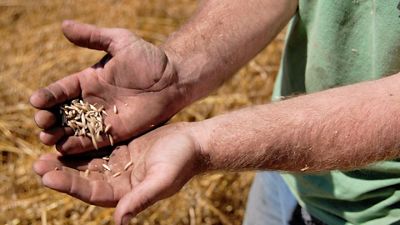
The mill will process 3 million bushels of oats from regional farms annually, offering farmers a reliable market and reducing the United States’ dependence on imported oat products.
The facility will also provide agronomic support, helping farmers treat oats as a primary crop, with guidance on proper variety selection, nutrient stewardship and management.
How The Nature Conservancy Is Helping
Given the many environmental and economic benefits of diversifying crops with oats and other small grains, The Nature Conservancy (TNC) is working alongside farmers to make oat production viable and scalable.
“We know farmers need reliable markets to take the leap into growing new crops,” says Kushner. “That’s why TNC is backing new crop insurance options to reduce the risk of growing oats, offering technical support to help farmers succeed, and working to expand storage solutions for those producing and processing oats.”
Specifically, TNC is
- Modeling farm-level economics (profit and loss) of adding oats as a third crop in rotation, including analyzing the impacts of market forces such as tariffs, new crop insurance products and more;
- Commissioning a feasibility study for potential oat storage facilities in support of the new milling infrastructure;
Exploring innovative crop insurance models, similar to the Malting Barley Endorsement, to provide risk mitigation tools for farmers; and
- Providing financial assistance to the Oat Mafia farmers collaborative to provide technical assistance to oat growers.
Oats no longer have to be a niche crop for Midwestern farmers. Oats can help build a resilient, profitable farming system that benefits farmers, communities and nature.
